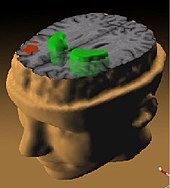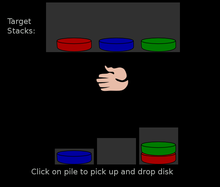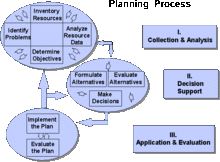https://en.wiki pedia.org/wiki/Planning
"Forethought" redirects here. For the defunct software company, see Forethought, Inc.
This article is about the concept. For urban planning, often referred to as simply "planning", see urban planning.
| Part of a series on |
| Planning |
| Planning |
|
|
| Psychology |
|
|
| Business |
|
|
|
|
Planning is the process of thinking regarding the activities required to achieve a desired goal. Planning is based on foresight, the fundamental capacity for mental time travel. The evolution of forethought, the capacity to think ahead, is considered to have been a prime mover in human evolution.[1] Planning is a fundamental property of intelligent behavior. It involves the use of logic and imagination to visualise not only a desired end result, but the steps necessary to achieve that result.
An important aspect of planning is its relationship to forecasting. Forecasting aims to predict what the future will look like, while planning imagines what the future could look like.
Planning according to established principles is a core part of many professional occupations, particularly in fields such as management and business. Once a plan has been developed, it is possible to measure and assess progress, efficiency and effectiveness. As circumstances change, plans may need to be modified or even abandoned.
Psychology
Planning has been modelled in terms of intentions: deciding what tasks one might wish to do; tenacity: continuing towards a goal in the face of difficulty and flexibility, adapting one's approach in response implementation.[2]: 89 An implementation intention is a specification of behaviour that an individual believes to be correlated with a goal will take place, such as at a particular time or in a particular place. Implementation intentions are distiguished from goal intentions, which specifies an outcome suc as running a marathon.[2]: 89
Neurology
 The striatum; part of the basal ganglia; neural pathways between the striatum and the frontal lobe have been implicated in planning function.
The striatum; part of the basal ganglia; neural pathways between the striatum and the frontal lobe have been implicated in planning function.
Planning is one of the executive functions of the brain, encompassing the neurological processes involved in the formulation, evaluation and selection of a sequence of thoughts and actions to achieve a desired goal. Various studies utilizing a combination of neuropsychological, neuropharmacological and functional neuroimaging approaches have suggested there is a positive relationship between impaired planning ability and damage to the frontal lobe.
A specific area within the mid-dorsolateral frontal cortex located in the frontal lobe has been implicated as playing an intrinsic role in both cognitive planning and associated executive traits such as working memory.
Disruption of the neural pathways, via various mechanisms such as traumatic brain injury, or the effects of neurodegenerative diseases between this area of the frontal cortex and the basal ganglia, specifically the striatum (corticostriatal pathway), may disrupt the processes required for normal planning function.[3]
Individuals who were born very low birth weight (<1500 grams) and extremely low birth weight are at greater risk for various cognitive deficits including planning ability.[4][5]№
Neuropsychological tests
 Animation of a four disc version of the Tower of Hanoi
Animation of a four disc version of the Tower of Hanoi
There are a variety of neuropsychological tests which can be used to measure variance of planning ability between the subject and controls.
- Tower of Hanoi, a puzzle invented in 1883 by the French mathematician Édouard Lucas. There are different variations of the puzzle: the classic version consists of three rods and usually seven to nine discs of subsequently smaller size. Planning is a key component of the problem-solving skills necessary to achieve the objective, which is to move the entire stack to another rod, obeying the following rules:
- Only one disk may be moved at a time.
- Each move consists of taking the upper disk from one of the rods and sliding it onto another rod, on top of the other disks that may already be present on that rod.
- No disk may be placed on top of a smaller disk.[6][7]
 Screenshot of the PEBL psychology software running the Tower of London test
Screenshot of the PEBL psychology software running the Tower of London test
- Tower of London is another test that was developed in 1992 by Tim Shallice specifically to detect deficits in planning as may occur with damage to the frontal lobe. Test participants with damage to the left anterior frontal lobe demonstrated planning deficits (i.e., greater number of moves required for solution).
Test participants with damage to the right anterior, and left or right posterior areas of the frontal lobes, showed no impairment. The results implicating the left anterior frontal lobes involvement in solving the Tower of London were supported in concomitant neuroimaging studies which also showed a reduction in regional cerebral blood flow to the left pre-frontal lobe. For the number of moves, a significant negative correlation was observed for the left prefrontal area: i.e. subjects that took more time planning their moves showed greater activation in the left prefrontal area.[8]
Planning theories
Business

Post-it Notes and written text on a whiteboard, articulating a plan  Example of planning process framework
Example of planning process framework
Patrick Montana and Bruce Charnov outline a three-step result-oriented process for planning:[9]
- Choosing a destination
- Evaluating alternative routes
- Deciding the specific course of the plan
In organizations, planning can become a management process, concerned with defining goals for a future direction and determining on the missions and resources to achieve those targets. To meet the goals, managers may develop plans such as a business plan or a marketing plan. Planning always has a purpose. The purpose may involve the achievement of certain goals or targets: efficient use of resources, reducing risk, expanding the organisation and its assets, etc.
Public policy
Public policies include laws, rules, decisions, and decrees. Public policy can be defined as efforts to tackle social issues via policymaking.[10] A policy is crafted with a specific goal in mind in order to address a societal problem that has been prioritized by the government.[11]
Public policy planning includes environmental, land use, regional, urban and spatial planning. In many countries, the operation of a town and country planning system is often referred to as "planning" and the professionals which operate the system are known as "planners".
It is a conscious as well as sub-conscious activity. It is "an anticipatory decision making process" that helps in coping with complexities. It is deciding future course of action from amongst alternatives. It is a process that involves making and evaluating each set of interrelated decisions. It is selection of missions, objectives and "translation of knowledge into action." A planned performance brings better results compared to an unplanned one. A manager's job is planning, monitoring and controlling. Planning and goal setting are important traits of an organization. It is done at all levels of the organization. Planning includes the plan, the thought process, action, and implementation. Planning gives more power over the future. Planning is deciding in advance what to do, how to do it, when to do it, and who should do it. This bridges the gap from where the organization is to where it wants to be. The planning function involves establishing goals and arranging them in logical order. An organization that plans well achieves faster goals than one that does not plan before implementation.
Personal
Planning is not just a professional activity: it is a feature of everyday life, whether for career advancement, organising an event or even just getting through a busy day.
Alternatives to planning
Opportunism can supplement or replace planning.[12][13]
Types of planning
See also
References
- Suddendorf T, Corballis MC (June 2007). "The evolution of foresight: What is mental time travel, and is it unique to humans?" (PDF). The Behavioral and Brain Sciences. 30 (3): 299–313, discussion 313–51. doi:10.1017/S0140525X07001975. PMID 17963565.
- Bieleke, Maik; Keller, Lucas; Gollwitzer, Peter M. (2021-01-02). "If-then planning". European Review of Social Psychology. 32 (1): 88–122. doi:10.1080/10463283.2020.1808936. ISSN 1046-3283.
- Owen, AM (Nov 1997). "Cognitive planning in humans: neuropsychological, neuroanatomical and neuropharmacological perspectives". Prog Neurobiol. 53 (4): 431–50. doi:10.1016/s0301-0082(97)00042-7. PMID 9421831. S2CID 69523.
- Harvey, JM; O'Callaghan, MJ; Mohay, H (May 1999). "Executive function of children with extremely low birthweight: a case control study". Dev Med Child Neurol. 41 (5): 292–7. doi:10.1017/s0012162299000663. PMID 10378753.
- Aarnoudse-Moens, CS; Weisglas-Kuperus, N; van Goudoever, JB; Oosterlaan, J (Aug 2009). "Meta-analysis of neurobehavioral outcomes in very preterm and/or very low birth weight children" (PDF). Pediatrics. 124 (2): 717–28. doi:10.1542/peds.2008-2816. PMID 19651588. S2CID 18012434.
- Welsh, MC; Huizinga, M (Jun 2001). "The development and preliminary validation of the Tower of Hanoi-revised". Assessment. 8 (2): 167–76. doi:10.1177/107319110100800205. PMID 11428696. S2CID 27931772.
- Anderson, JR; Albert, MV; Fincham, JM (Aug 2005). "Tracing problem solving in real time: fMRI analysis of the subject-paced Tower of Hanoi". J Cogn Neurosci. 17 (8): 1261–74. CiteSeerX 10.1.1.139.8424. doi:10.1162/0898929055002427. PMID 16197682. S2CID 7567982.
- Shallice, T. (1982). "Specific impairments of planning". Philosophical Transactions of the Royal Society of London. Series B, Biological Sciences. 298 (1089): 199–209. Bibcode:1982RSPTB.298..199S. doi:10.1098/rstb.1982.0082. PMID 6125971.
- Barron's Management, Barron's Business Review book fifth edition: Patrick J. Montana and Bruce H. Charnov
- Yalmanov, N.. (2021). Public Policy and Policy-Making. KnE Social Sciences. 10.18502/kss.v5i2.8400.
- Knoepfel, Peter & Larrue, Corinne & Varone, Frédéric & Hill, Michael. (2011). Public policy. 10.1332/policypress/9781861349071.003.0002.
- For example: Faludi, Andreas (1987). A Decision-centred View of Environmental Planning. Urban and Regional Planning Series. Vol. 38. Oxford: Elsevier (published 2013). p. 208. ISBN 9781483286488. Retrieved 2018-07-11.
Plans which do not allow for [accommodating the public and private interest in land development] will be neglected. So the effect is the opposite of what is intended: opportunism.
- Hammond, Kristian; Converse, Timothy; Marks, Mitchell; Seifert, Colleen M. (1993). "Opportunism and Learning" (PDF). Machine Learning. 10 (3): 279–309. doi:10.1023/A:1022639127361. S2CID 14604957.
Further reading

Wikimedia Commons has media related to
Planning.

Look up planning in Wiktionary, the free dictionary.

Wikiquote has quotations related to Planning.
- Allmendinger, Phil; Gunder, Michael (2005). "Applying Lacanian Insight and a Dash of Derridean Deconstruction to Planning's 'Dark Side'". Planning Theory. 4: 87–112. doi:10.1177/1473095205051444. S2CID 145100234.
- Bazin, A. (2012). Bilateral and multilateral planning: Best practices and lessons learned. Strategos.
- Das, J P, Binod C Kar, Rauno K Parrila. Cognitive Planning: The Psychological Basis of Intelligent Behaviour. Sage Publications Pvt. Ltd; illustrated edition. English ISBN 0-8039-9287-4 ISBN 978-0-8039-9287-0
- Gunder, Michael (2003). "Passionate Planning for the Others' Desire: An Agonistic Response to the Dark Side of Planning". Progress in Planning. 60 (3): 235–319. doi:10.1016/s0305-9006(02)00115-0.
- Pløger, John (2001). "Public Participation and the Art of Governance". Environment and Planning B: Planning and Design. 28 (2): 219–241. doi:10.1068/b2669. S2CID 143996926.
- Roy, Ananya (2008). "Post-Liberalism: On the Ethico-Politics of Planning". Planning Theory. 7 (1): 92–102. doi:10.1177/1473095207087526. S2CID 143458706.
- Tang, Wing-Shing (2000). "Chinese Urban Planning at Fifty: An Assessment of the Planning Theory Literature". Journal of Planning Literature. 14 (3): 347–366. doi:10.1177/08854120022092700. S2CID 154281106.
- Yiftachel, Oren, 1995, "The Dark Side of Modernism: Planning as Control of an Ethnic Minority," in Sophie Watson and Katherine Gibson, eds., Postmodern Cities and Spaces (Oxford and Cambridge, MA: Blackwell), pp. 216–240.
- Yiftachel, Oren (1998). "Planning and Social Control: Exploring the Dark Side". Journal of Planning Literature. 12 (4): 395–406. doi:10.1177/088541229801200401. S2CID 14859857.
- Yiftachel, Oren (2006). "Re-engaging Planning Theory? Towards South-Eastern Perspectives". Planning Theory. 5 (3): 211–222. doi:10.1177/1473095206068627. S2CID 145359885.
Links
https://en.wikipedia.org/wiki/Category:Planning
Subcategories
`0-9
`A
`B
` Business planning (3 C, 36 P)
`C
`D
`E
` Economic planning (8 C, 34 P)
`F
` Family planning (5 C, 12 P)
`G`H`I`J`K`L
`M
` Military planning (3 C, 14 P)
`N
`O
`P
` Personal information managers (8 C, 67 P)
Planning ministers (3 C, 1 P)
Planning ministries (3 C, 18 P)
Projects (17 C, 14 P)
Proposals (19 C, 11 P)
`Q`R
`S
`T
` Time management (1 C, 34 P)
`U
` Urban planning (48 C, 264 P)
`V`W`X`Y`Z
Index
```ёёё[[[
,,0-9,,А,,Б,,В,,Г,,Д,,Е,,Ё,,Ж,,З,,И,,Й,,К,,Л,,М,,Н,,О,,П,,Р,,,С,,Т,,У,,Ф,,Х,,Ц,,Ч,,Ш,,Щ,,Ь,,Ы,,Ъ,,Э,,Ю,,Я
``0-9``A``B``C``D``E``F``G``H``I``J``K``L``M``N``O``P``Q``R``S``T``U``V``W``X``Y``Z
` Planning
``A
` All Partners Access Network
``B
` Backcasting
BLUF (communication)
``C
` Centres of influence
Choice
Commercial area
Concept-driven strategy
Contingency allowance
Counterplan (Soviet planning)
Cross-cultural differences in decision-making
``D
` Default effect (psychology)
Deliberative planning
Disaster recovery plan
Discovery-driven planning
``E
` Enterprise architecture planning
Event scheduling
EXAPT
Externally oriented planning
``F
` Fragplan
``G
` Gantt chart
Grandfather principle
Group information management
Growth planning
``I
` Implementation intention
Interactive planning
``L
` Long-range planning
``O
` Open strategy
Organizational stakeholders
``P
` Pacific Warfighting Center
Parish plan
Plan
Planned maintenance
Planning fallacy
Plano Trienal
Production planning
Project plan
``R
` Reproductive life plan
Rescue plans for 2010 Copiapó mining accident
Resource-Task Network
Rubicon model (psychology)
``S
Computing Scheduling
Scheduling (production processes)
School timetable
Strategic communication
Strategy
Succession planning
``T
` Territorialist School
Time–distance diagram
``W
` Window of opportunity
Pages in Other Languages
Categories:
Systems engineering
Neuropsychological assessment
Comments (0)
You don't have permission to comment on this page.